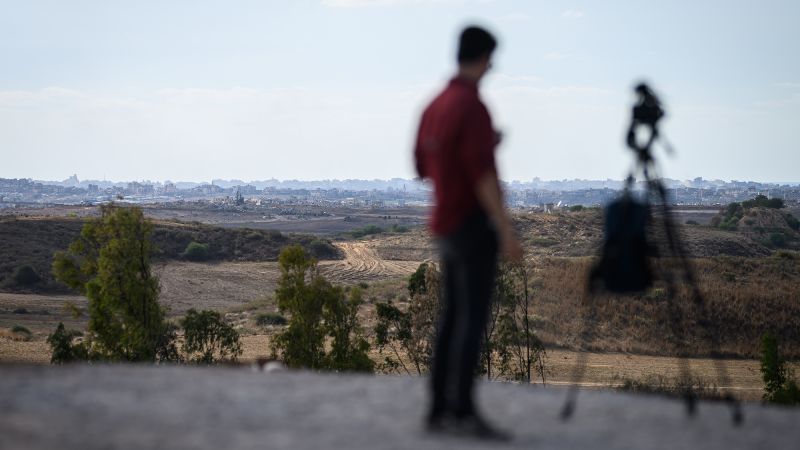In 2023, the year was intense for journalists in Israel and the Palestinian territories with record levels of violence and protests against the Israeli government. The terror attacks from Hamas on October 7 led to a flood of outside reporters and global focus on the region. Since the war began, a record number of media workers have lost their lives, mostly due to Israeli military bombardment in Gaza. Journalists face threats, obstacles in reporting from the warzone, and internal newsroom pressures and attacks from viewers.
Since the war began, at least 128 journalists have been killed, the vast majority being Palestinian media workers in Gaza due to Israeli airstrikes. Some were targeted even while wearing press gear. The Israeli military denies intentionally targeting journalists, citing the challenges of safety in an active military zone and accusing Hamas of using journalists as cover. Despite accusations, the toll on media workers is immense, with many facing harsh conditions and threats to their safety while reporting in the region.
In Israel, there have been noted physical attacks on journalists, including fatalities, since the October 7 attacks. Many media organizations have evacuated their staff from Gaza due to the dangers and restrictions faced with reporting from the enclave. Palestinian journalists face multiple challenges in reporting from Gaza, including constant threats of bombardment, lack of basic supplies, and the responsibility of caring for their families in tents amidst chaos and lawlessness.
International news organizations have faced difficulties in getting access to Gaza due to the blockade by Israel and Egypt. The Israeli military has taken journalists on embedded trips with restrictions, leading to issues of freedom of movement and censorship. Pressure on international press was increased by the Israeli government’s closure of Al Jazeera’s operations, accusing the network of supporting terror. The Israeli Supreme Court has been petitioned to allow independent journalist access to Gaza.
Foreign journalists covering the conflict face internal and external pressures, criticism for their reporting, and intense scrutiny on social media. The conflict has made impartial reporting challenging as audiences from both sides reject opposing viewpoints. The journalists have to navigate reporting on a polarizing conflict that challenges traditional journalistic practices and raises ethical dilemmas. The war has also prompted shifts in how the conflict is described, with increased vigilance and cynicism from both reporters and audiences.
The pressures on journalists in the region do not only come from physical threats but also mental health challenges, stress, and criticism. Reporters have faced distressing footage, health problems, and strained personal relationships due to their coverage of the conflict. The toll on journalists covering the war in Israel and Gaza has been immense, with some facing physical and emotional numbing as a result of routine coverage of relentless violence and attacks.


